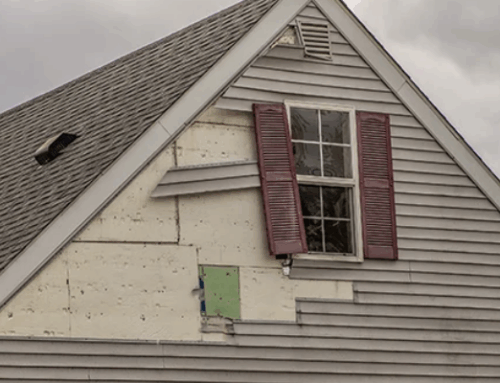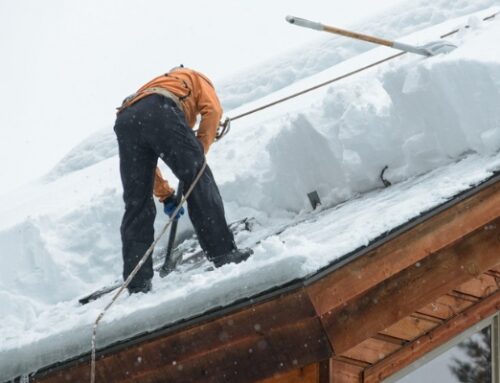Selecting the right siding material for your home is a pivotal decision that impacts both its appearance and structural integrity. Siding not only enhances the curb appeal but also shields your house from the elements. When evaluating siding options, durability, and longevity become paramount considerations. In this blog, we’ll delve deeper into the characteristics of different siding materials to empower you to make a well-informed choice.
Fiber Cement Siding:
Fiber cement siding, a blend of cement, sand, and cellulose fibers, emerges as a robust and long-lasting option. Its composition renders it resistant to rot, fire, and insect damage, making it well-suited for diverse climates. Fiber cement siding demands minimal maintenance and can endure harsh weather conditions, including high winds and heavy rainfall. With proper installation and upkeep, fiber cement siding can surpass the 50-year mark, positioning it as a durable investment for homeowners seeking longevity and reliability.
Aluminum Siding:
Once a prevalent choice known for its durability and resistance to corrosion, aluminum siding has witnessed a decline in popularity due to advancements in alternative siding materials. Despite being lightweight and easy to install, aluminum siding is susceptible to denting and scratching, particularly in regions prone to hail or other impacts. Additionally, aluminum siding may experience fading over time, necessitating repainting to preserve its appearance. With meticulous care, aluminum siding can endure for 20 to 30 years, though it may demand more frequent maintenance compared to other materials.
Vinyl Siding:
Vinyl siding stands out as one of the most prevalent choices among homeowners owing to its affordability and low maintenance requirements. Composed of polyvinyl chloride (PVC) resin, vinyl siding is resistant to rot, insects, and fading, making it a durable option for various climates. However, extreme weather conditions such as hail or high winds can potentially cause damage to vinyl siding. While manufacturers typically offer warranties ranging from 20 to 40 years, the actual longevity of vinyl siding can fluctuate depending on factors such as maintenance and environmental conditions.
Brick Siding:
Brick siding is renowned for its durability, classic aesthetic, and low maintenance requirements. Made from fired clay, brick siding is highly resistant to rot, insects, and fire, making it an excellent choice for various climates. Brick siding offers exceptional longevity, with some structures showcasing their original brick siding for centuries. While initial installation costs can be higher compared to other siding materials, brick siding requires minimal maintenance and can withstand the test of time with proper care.
Stone Veneer Siding:
Stone veneer siding offers the luxurious look of natural stone at a fraction of the cost. Composed of thin slices of natural stone adhered to a backing material, stone veneer siding provides excellent durability and aesthetic appeal. It is resistant to rot, insects, and fire, making it suitable for diverse climates. Stone veneer siding requires minimal maintenance and can last for decades with periodic cleaning and sealing. While it may not be as durable as solid stone, stone veneer siding offers a cost-effective alternative without compromising on visual impact.
Wood Siding:
Wood siding exudes timeless charm and natural elegance, making it a preferred choice for many homeowners. Varieties like cedar and redwood are favored for their innate resistance to rot and insects. However, wood siding necessitates regular maintenance, including painting or staining, to safeguard against moisture and UV damage. Without diligent care, wood siding is prone to rot, warping, and insect infestations. While properly maintained wood siding can endure for 20 to 30 years or more, its longevity hinges on attentive maintenance practices and environmental factors.
Stucco Siding:
Stucco siding, a traditional siding option, is composed of cement, sand, lime, and water. It is applied in multiple layers to create a durable, weather-resistant exterior finish. Stucco siding is highly versatile and can be textured or smooth, depending on aesthetic preferences. It offers excellent durability and can withstand harsh weather conditions, including rain, wind, and heat. Stucco siding requires minimal maintenance, with occasional cleaning and patching of cracks or chips. With proper installation and care, stucco siding can last for decades, making it a popular choice for Mediterranean and Southwestern-style homes.
Metal Siding:
Metal siding, typically made from aluminum or steel, offers durability, low maintenance, and modern aesthetic appeal. It is resistant to rot, insects, fire, and moisture, making it suitable for various climates. Metal siding is available in a range of colors and finishes, including corrugated, smooth, and textured options. It is lightweight, easy to install, and can be recycled at the end of its lifespan, making it an environmentally friendly choice. With proper installation and occasional cleaning, metal siding can last for 30 years or more, providing long-term durability and protection for your home.
Other Considerations:
- Cost: While durability and longevity are crucial factors, homeowners should also consider the initial cost of the siding material and its long-term value.
- Energy Efficiency: Some siding materials offer better insulation properties, contributing to energy efficiency and potential cost savings on heating and cooling bills.
- Environmental Impact: Assessing the environmental impact of siding materials, including manufacturing processes, recyclability, and sustainability, is becoming increasingly important for eco-conscious homeowners.
Conclusion:
The selection of siding material for your home necessitates careful consideration of durability and longevity factors. While vinyl siding offers affordability and minimal maintenance, fiber cement and wood siding boast greater durability and longevity potential with proper care. Ultimately, the optimal siding material hinges on your budget, aesthetic preferences, and the climatic conditions in your region. By weighing the advantages and drawbacks of each siding material, you can make a judicious decision that enhances your home’s aesthetics and fortifies its structural integrity for years to come.






